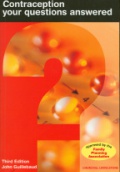Complementary Approaches for Using Ecotoxicity Data in Soil Pollution Evaluation
M D Fernandez, J V Tarazona
ISBN: 9781606921050
Vydavatelství: Nova Science Publishers
Rok vydání: 2008
Vazba: Paperback
Počet stran: 81
Původní cena: 1 480 Kč
Výstavní cena:
1 258 Kč(t.j. po slevě 15%)
(Cena je uvedena včetně 10% DPH)
Katalogová cena: 39.99 GBP
Nárok na
dopravu zdarma
Termín dodání na naši pobočku v Brně je přibližně 3-4 týdny.
The assessment of soil quality has usually focused on human health protection as the main objective. Recently, criteria for the protection of ecosystems have been incorporated and ecotoxicological analyses are recommended to estimate the risk to ecological receptors associated with contaminants in soils (Calow, 1993; Stephenson et al., 2002; Loibner et al., 2003; Robidoux et al., 2004b). The ecotoxicological assessment of soils is mostly based on the toxicity test with selected organisms. Two complementary approaches are available. The first approach consists in the identification of toxicity thresholds for each relevant pollutant, thresholds that are based on the evaluation of effects of chemical substances on selected organisms representing relevant ecological receptors. The results of these assays are used for setting soil quality standards for each pollutant or pollutant class. Risk assessment tools can be used for this purpose, pre-establishing acceptable levels of risk. The contamination level is based on the comparison of the concentration of contaminants measured in the soil with the standards established from the thresholds. Although field and semi-field information can be incorporated in the higher tier steps, the thresholds are mostly developed from standardised toxicity assays conducted under laboratory conditions following international (e.g. OECD, ISO) or national (e.g. USEPA, ASTM) guidelines. In the second approach, toxicity assays are performed directly with the contaminated media (soil, water, sediment). This alternative, performing the assays with environmental samples, constitutes the method called direct (eco)toxicity assessment (DTA), and is based on modified bioassays. Most regulations have developed soil quality standards based on toxicity assays. However, due to the limitations in the lab to field extrapolation, trends were directed towards the combination of chemical analysis and DTA (Peterson et al., 1990; Torstensson, 1993; T?rsl?v et al., 1997). In this book, both alternatives will be compared. The main difference between both approaches is that in the first case, a reference "uncontaminated" soil sample is spiked with one or a few chemicals at different concentrations, while in the DTA approach real soil samples are collected at the contaminated site, therefore containing a realistic combination of the different pollutants present in the area, the field sample can be then tested and/or "diluted" with "uncontaminated" soil to create a pollution gradient. The toxicity of the spiked or collected/diluted samples is measured and concentration/response relationships obtained in both cases. To understand better this comparison, in this book the term "toxicity test" will be used for the first approach: toxicity tests with samples spiked at the lab; while the term "bioassay" will be used for the DTA approach: samples collected at the field.

